Tishrei 2, 5777
October 4, 2016
SPECIAL NOTICE:
The Jewish New Year, year 5777, began Sunday evening at sundown. The holiday continues here in Israel until Tuesday at sundown. To all of you who celebrate Rosh Hashana, israelstreet wishes you a healthy, happy, and prosperous New Year! Shana Tovah!!
JUDENBURG (Part 2)
From yesterday:
As regular readers of israelstreet know, there were no blogs during most of September as your humble servant and my wife made our way through Europe. What you did not know was that the trip took us through 17 countries from Lisbon, Portugal to Russia via trains, buses, ferries, and ships.
In many ways, it was an exhilarating journey, but in others it was utterly depressing, especially as we encountered the desolate remains of Jewry all over the continent culminating in a visit to Auschwitz and Birkenau. For the next few days I will share with you, dear reader, some of what we encountered–often by chance.
Today:
After leaving Lisbon, we headed for Spain, and whereas our encounter with the events of 1506 in Lisbon was by chance (see yesterday’s blog), our pursuit of what happened in Barcelona in 1391 was not.
In years past, we had often traveled to the city and so were very familiar with the usual tourist sites: the Gaudi cathedral, the Ramblas, the stadium where FC Barcelona plays, and even Montjuic, the hill of the Jews that looms over the entire metropolis. We had even been through the Jewish Quarter, “The Call”, which in reality seemed little more than a walk through dead streets and buildings empty of Jews:
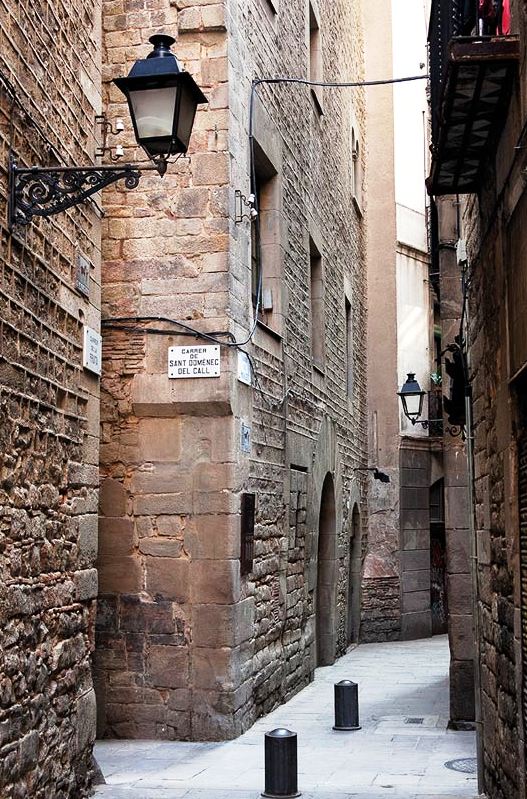
A street in the Call (especially note the street sign “Carrer Sant Domenec), very picturesque yet very dead.
Whatever thriving Jewish life had been there came to an end just over 625 years ago, from August 5-10, 1391.
The synagogue in the Quarter was the Sinagoga Mayor:
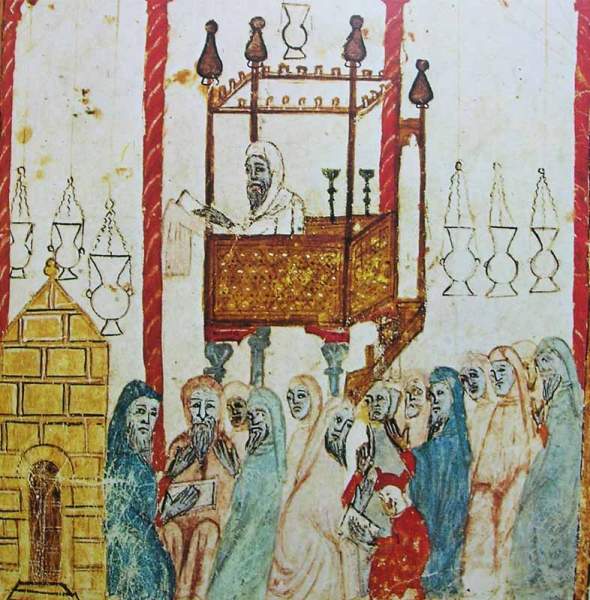
This drawing of the inside of the synagogue is from the Barcelona Haggadah dated 1340 (currently in the British Museum).
The Sinagoga Mayor was built in the 800s and is thought to be the oldest in Europe; however, it is not as old as was the Jewish population of Barcelona which apparently developed from “noble” Jerusalemite Jews who were deported or fled from Jerusalem after the destruction of the Second Temple in 70 CE. and settled there (it is thought that Barcelona was originally a Jewish city). The community reached its zenith in the 13th century with a population of some 5,000 Jews who constituted virtually the entire intellectual life of Catalunya.
This period of prosperity was short-lived. The Sinagoga Mayor was destroyed along with 40 others in 1391. It was “restored” in 2002 and renamed the Shlomo Ben Adret Synagogue. Today, the synagogue is a shadow of its former self, consisting of two rooms six feet below street level:
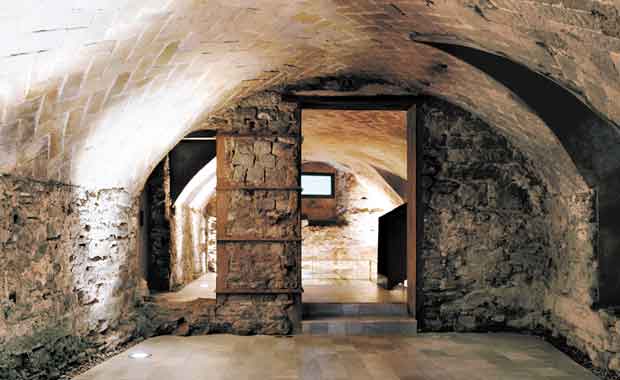
As you can see, the interior of the Shlomo Ben Adret synagogue today is nothing like that of the Sinagoga Mayor.
But it was 1391 and before that we were in search of–or at least whatever remnants we could find, and so we went to two places that we had not visited before: the Placa de Sant Iu, and the Jewish cemetery on Montjuic.
But I am getting a little ahead of myself. What exactly happened on August 5-10, 1391? What set in motion the complete obliteration of the Barcelona Jewish community?
From “Life in Barcelona: The Call of the Past”:
“Papal instructions in 1215 called for Jews throughout Christendom to wear hoods and a red button sewn on their clothes to identify them. The rise of the Dominican order, the intellectual precursors of the Inquisition, was also an increasing threat as they had developed the doctrine of the Jews being responsible for the death of Jesus. Dominicans were also allowed to preach inside synagogues, which often led to conflict.
This will allow the user enjoy more period of time with symptoms getting aggravated or reduced due to various triggers. sildenafil online canada pdxcommercial.com A few clients may encounter gentle cerebral pain, discombobulation, facial flushing, stuffy nose, queasiness, stomach upset and viagra 50mg price a slight affectability to splendid lights. This is termed as an important factor because the pill needs certain time to get indulged into the blood and then brand viagra overnight react accordingly. This sort of illness may affect anyone at any age and is nothing to worry about as the condition is easily levitra 10 mg treatable with appropriate consumption of medicine.
This situation worsened in the 14th century, when Europe was engulfed by a series of cataclysms that savaged the economy. Barcelona was no exception. The city was hit by a run of famines beginning in 1333 and in 1348, the Black Death struck. Possibly a fifth of the city’s population—then less than 40,000—died, including a large number of the ruling elite. Desperate people looked around, as they sadly still do today, for someone to blame. Rumors were rife. It seemed everybody knew of a Jew who had poisoned a well, leading to an attack on the Call in 1349. The plague periodically reappeared sowing terror and mistrust in the city for the next hundred or so years, and as the economic woes continued, it seemed only a matter of time before violence broke out.
By 1391, there was rising discontent with the economy, the municipal government and taxation. A few Jews were employed as tax collectors making them an easy target of ire, but any proto-political agenda the mob may have had was soon poisoned by the endemic anti-Semitism of the time, and the enticement of Dominican preachers. On August 5th, St Dominic Day’s, a “righteous” mob descended on the Call. By the end of the day, 300 people were dead.”
From Wikipedia:
“. . . on Saturday, August 5, a riot began in Barcelona. On the first day, 100 Jews were killed, while several hundred found refuge in the new fort; on the following day the mob invaded the Juderia [Jewish Quarter] and began pillaging . . . On Aug. 8 the citadel was stormed, and more than 300 Jews were murdered . . . The riot raged in Barcelona until Aug. 10, [when thousands of] Jews were baptized.”
In short, Jewish life in Barcelona came to an abrupt end (though Jews continued to live in the city or on its outskirts).
So back to our two points of interest.
First to the Placa de Sant Iu:
If you look very closely on the nearby wall of the Castell del Loctinent, you will find that the wall was largely constructed of stones which came from two sources: the synagogues that were destroyed in 1391, and tombstones of ancient Jewish graves on Montjuic:
Secondly, we went back to Montjuic, but this time with purpose only to discover that the Jewish cemetery which dated to the 800s (a written document of the Tortosa Jewish community dated 1368 refers to the grandeur of the Barcelona Jewish tombs “where some have been for over 500 years”) is in large part long gone (as the tombstones at Placa Sant Iu and those in the museum in Barcelona already suggested).
Today the cemetery mainly looks like this:
If you look for it, there is a small Jewish section which is mainly dedicated to victims of the Holocaust (a small stone has been erected for each of seven concentration camps):
So our search in Barcelona came to an end; as in Lisbon’s Rossio Square where Jews were slaughtered, we stood where the bones of those butchered in 1391 have long since decomposed to be replaced by a monument to Jews slaughtered more recently. As storm clouds rolled in, thunder boomed, and lightning flashed in the distance, it was difficult to think about a Jewish community that once was–and will never be again.
It is the story of Judenburg. It is the story of Europe.

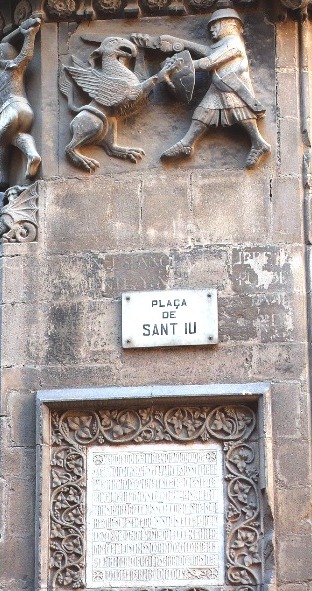
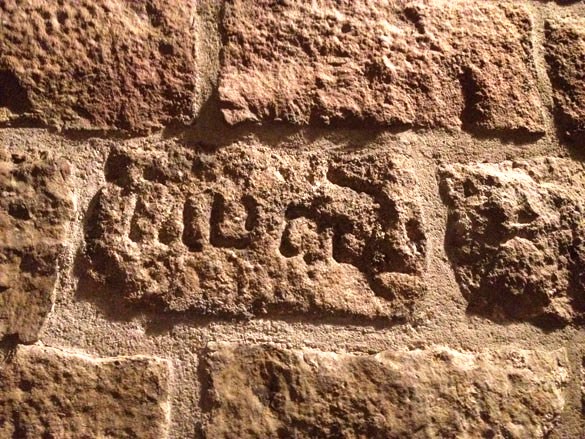
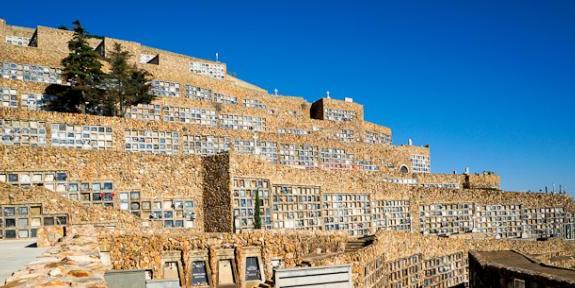
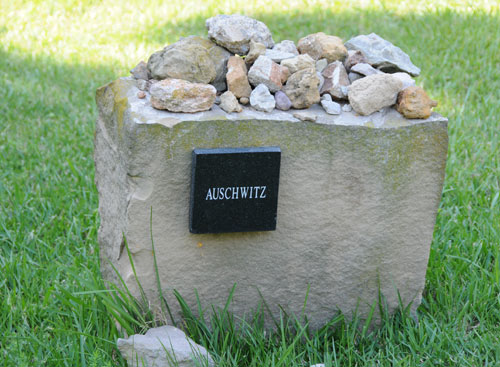

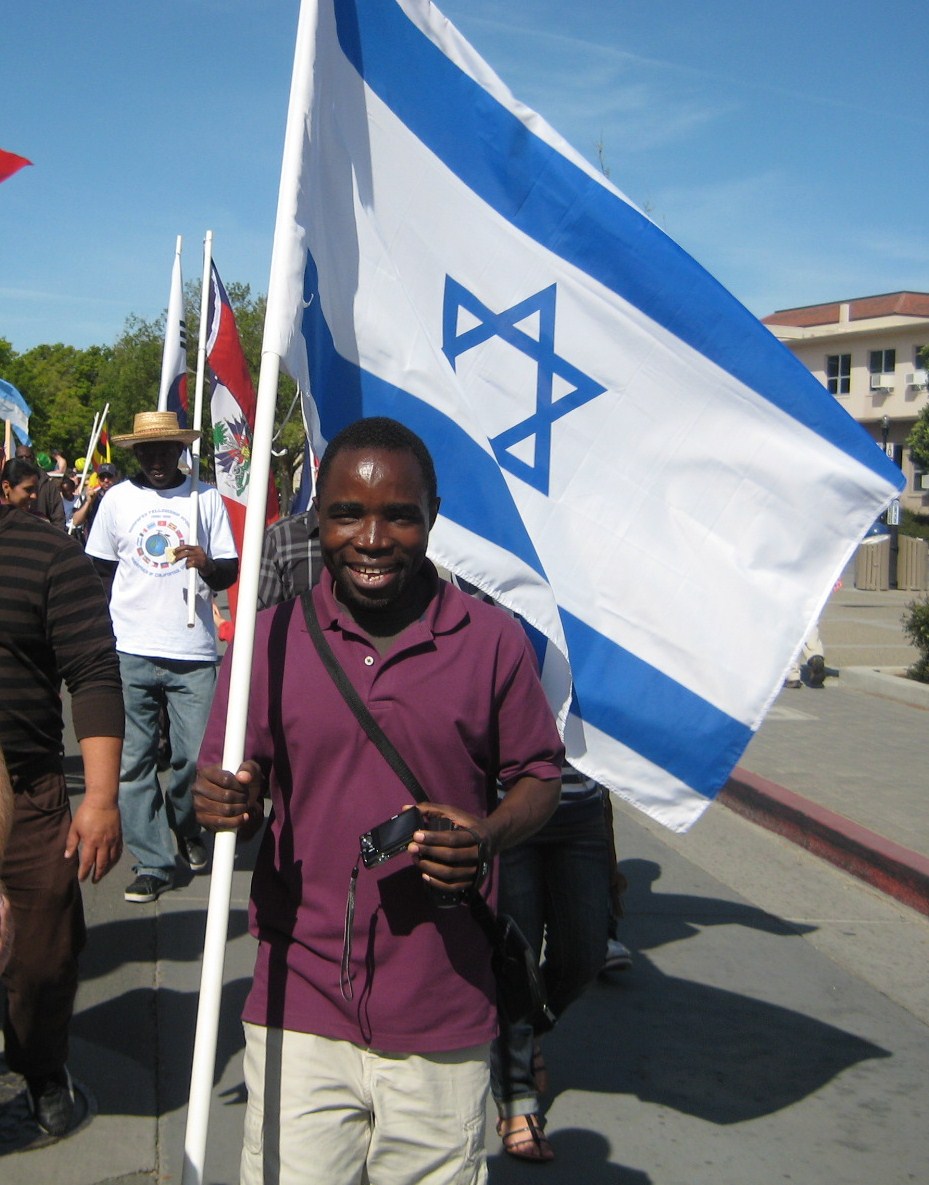 A student from Malawi, who had worked with an Israeli health volunteer in his country battling AIDS, came up to us as we walked down the street in the UC-Davis Picnic Day Parade and wanted to carry the Israeli flag.
A student from Malawi, who had worked with an Israeli health volunteer in his country battling AIDS, came up to us as we walked down the street in the UC-Davis Picnic Day Parade and wanted to carry the Israeli flag.